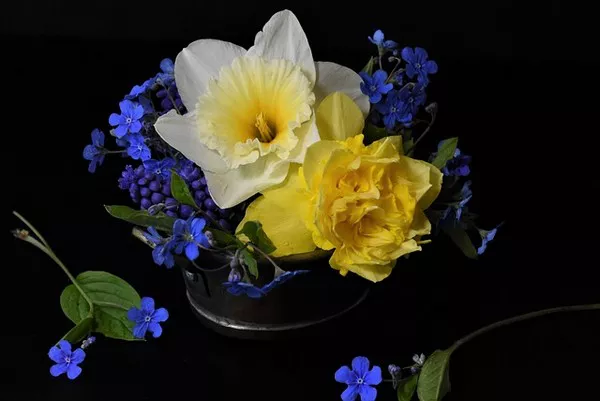Drying flowers is a timeless art that allows individuals to preserve the beauty of blooms for an extended period. Whether you are a seasoned floral enthusiast or a novice looking to embark on this creative journey, understanding the time it takes to dry flowers for cards is essential. In this comprehensive guide, we will delve into various methods of drying flowers and explore the factors influencing the drying time.
Methods of Drying Flowers:
Before delving into the timeframe for drying flowers, it’s crucial to understand the different methods available. Each technique imparts a unique charm to the dried flowers, making them suitable for various artistic endeavors such as crafting personalized flower cards.
Air Drying: Air drying is one of the most common and straightforward methods for drying flowers. To achieve optimal results, gather a bouquet of flowers with minimal moisture content. Remove excess foliage and tie the stems together using twine. Hang the bouquet upside down in a dark, dry, and well-ventilated area. The drying time for air-dried flowers typically ranges from one to three weeks.
Microwave Drying: Microwave drying is a faster alternative for those seeking quick results. This method involves placing flowers between layers of absorbent paper and microwaving them in short bursts. The drying time with this technique is significantly reduced to minutes rather than weeks. However, it requires careful monitoring to prevent over-drying or scorching.
Pressing: Pressing flowers is a traditional method that involves placing blooms between absorbent paper and pressing them with weight. This technique is ideal for creating flat, two-dimensional specimens suitable for card making. Pressed flowers can take anywhere from a few days to a few weeks to dry completely, depending on factors like humidity and flower type.
Factors Influencing Drying Time:
Several factors contribute to the drying time of flowers, regardless of the chosen method. Understanding these variables is crucial for achieving the best results and creating stunning flower cards.
Humidity: Humidity plays a significant role in the drying process. In high-humidity environments, the evaporation of moisture from the flowers is slower, leading to an extended drying time. Conversely, low humidity levels facilitate quicker drying. To expedite the process, consider drying flowers during periods of low humidity or using dehumidifiers in the drying space.
Flower Type: Different flower varieties contain varying levels of moisture. Thick-petaled flowers, such as roses and peonies, may take longer to dry than delicate blooms like daisies or baby’s breath. It’s essential to choose flowers with lower moisture content for faster drying times.
Preparation: Proper preparation before drying can significantly impact the overall drying time. Removing excess foliage and grouping similar flowers together for drying ensures a more efficient process. Additionally, cutting stems at an angle increases water absorption, reducing the time needed for moisture to evaporate.
Drying Method: The chosen drying method influences the overall timeframe. Air drying is a slower but gentler process, while microwave drying offers rapid results. The selection depends on the desired outcome and the available time for the project.
Creating Flower Cards:
Once the flowers are dried, the real magic begins as you embark on the journey of creating exquisite flower cards. Dried flowers lend themselves beautifully to a variety of card-making techniques, allowing for endless possibilities of expression.
Pressed Flower Cards: Utilizing pressed flowers is an excellent way to create elegant, two-dimensional cards. Arrange the pressed blooms on cardstock using adhesive, creating visually appealing compositions. The delicate nature of pressed flowers adds a touch of sophistication to your cards.
Layered 3D Cards: For a more dynamic effect, experiment with layered 3D cards. Combine various dried flowers and foliage to create depth and texture. Adhere the layers using foam tape or glue, allowing the flowers to pop off the card for a visually striking result.
Microwaved Flower Art: Flowers dried using the microwave method can be incorporated into unique and modern card designs. Arrange the microwaved blooms on cardstock, creating abstract patterns or designs. Experiment with different layouts and color combinations for a contemporary and artistic touch.
Conclusion:
In conclusion, the art of drying flowers for cards is a rewarding and creative endeavor that offers a plethora of possibilities. The time it takes to dry flowers depends on factors such as the chosen drying method, environmental conditions, and the type of flowers used. Understanding these variables empowers individuals to plan accordingly and embark on the journey of creating personalized, timeless flower cards. Whether opting for air drying, microwave drying, or pressing, the end result is a beautiful fusion of nature and artistry that can be cherished for years to come. Happy crafting!


